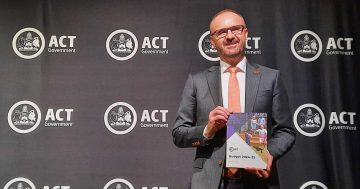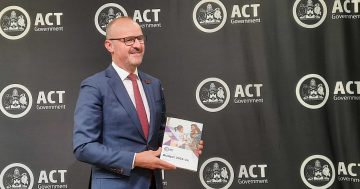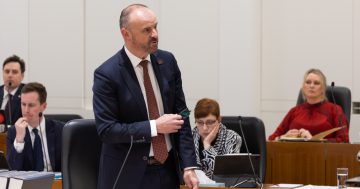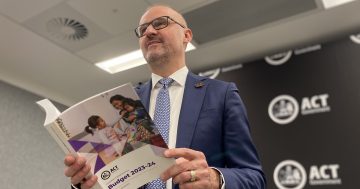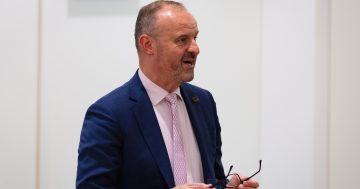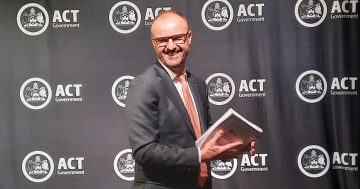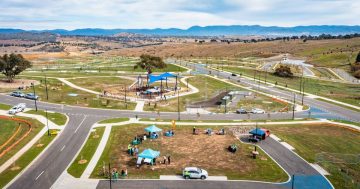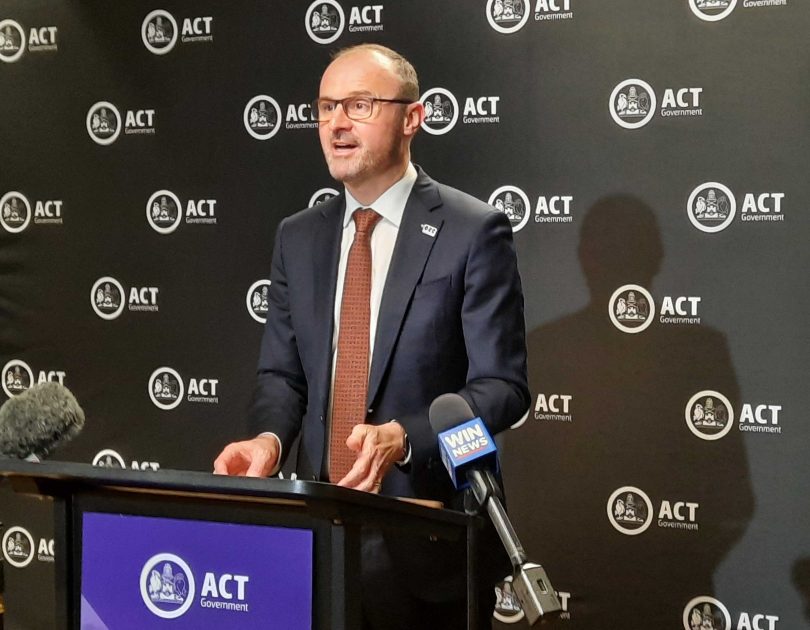
Chief Minister Andrew Barr: “You wouldn’t do it by choice.” Photo: Ian Bushnell.
The 2021-22 ACT Budget bears no resemblance to the one that Chief Minister and Treasurer Andrew Barr would have handed down in August, with the COVID-19 lockdown and pandemic response blowing out its bottom line to nearly $1 billion in the red.
The unprecedented budget position also shows net debt rising over the forward estimates to $9.5 billion in 2024-25, nearly double the 2021-22 figure, but Mr Barr believes this is affordable given record low interest rates, the strong institutional framework of the Federation and the ACT’s AAA credit rating.
The forecast deficit for 2021-22 is $951 million, $476.7 million higher than predicted in the 2020-21 Budget, and while that is expected to come back to $471 million by 2024-25, Mr Barr admits the path back to a balanced budget will be a tough one that requires things to go the ACT’s way.
In the ACT’s favour is the booming housing market that has buoyed revenue so that despite the hit to taxes and charges, revenue is forecast to be $425.3 million higher in 2021-22 than forecast in the 2020-21 Budget, and $772.6 million higher over the three years to 2023-24.
There is also more GST revenue forecast than in 2020-21, $67 million higher in 2021-22 and $231 million higher over the four years 2020-21 to 2023-24 for a total of $5.8 billion.
Mr Barr is also expecting a strong consumer-led recovery as the ACT leaves lockdown and close to 100 per cent vaccination triggers the easing of restrictions and unleashes pent up demand.
Also driving the economic recovery will be a $5 billion infrastructure pipeline that has already been announced, along with a host of other initiatives and COVID-support programs.
Mr Barr said the government had no choice but to deliver a budget that focused on the public health response, turbo-charging the economy and protecting the vulnerable.
“You wouldn’t do it by choice, but we do have a choice how strong the recovery is, and whether that includes everyone or not, or includes a public health response or not,” Mr Barr said.
He called the budget a full-throttled attempt to revive a pandemic-hit economy.
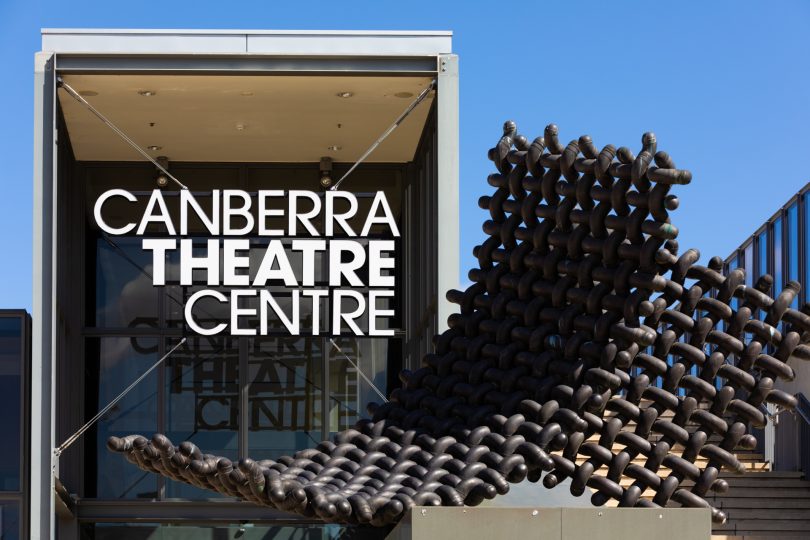
The city cultural precinct and Canberra Theatre redevelopment will be delayed. Photo: Michelle Kroll.
But he indicated that there was not a bottomless pit of money, warning that some projects will now be on the backburner and that the budget will need to be brought under control.
“The task clearly for the Territory is to grow its economy to bring in more revenue and carefully manage future expenditure,” Mr Barr said.
Stakeholder wishlists will need to be adjusted with projects such as a convention centre and city stadium pushed back to the second half of the decade.
“There will not be major new projects beyond what is outlined in this budget until the second half of the 2020s,” Mr Barr said.
And even those that do receive some funding this year will be delayed, such as the city cultural precinct and Canberra Theatre, which is now unlikely to commence construction before 2024-25. Only last year, Mr Barr said that the first sod would be turned before the next election in 2024.
“Unless we can find an alternative revenue source to fund it and a lot can change in a few years, it’s sitting mid-decade in the infrastructure list,” he said.
Mr Barr said the government had handed out $475 million in either grants or tax concessions to business – “that’s a football stadium in money that’s been handed necessarily and importantly to business”.
Ratepayers across the board will face an average 3.75 per cent rise as stamp duty continues to fall under the government’s tax reform program.
Stamp duty has now more than halved as a contributor to revenue, from 26 per cent to just 12 per cent, but the surging property market means the amount continues to rise and is tipped to peak at $265 million in 2021-22, and total $651.3 million over the forward estimates.
Commercial rates are expected to deliver $214.6 million in 2021-22, increasing by 8.4 per cent a year over the forward estimates. Revenue from residential rates will be $446.1 million, up from was $397.7 million, which was $2.2 million higher than estimated in the 2020-21 Budget, mainly due to higher numbers of residential units.
While some may have hoped for more land to be released for housing as the prospect of home-ownership recedes with the sky-rocketing prices, particularly for those wanting to buy a standalone home, Mr Barr said it came down to a question of deliverability.
Some lots have been brought forward as a part of the Indicative Land Release Program, but the government’s focus remains on developing estates in Molonglo, Gungahlin and Ginninderry, and urban infill areas.
That includes a little more than $2 million over four years to undertake planning and preliminary site investigation work to prepare the East Lake Urban Renewal project for development.
“You can’t just click your fingers and have serviced land available,” Mr Barr said.
Overall, the Indicative Land Release Program aims for 16,000 dwellings over five years, including 4737 homes across 631 single residential blocks as well as multi-unit sites in Molonglo Valley (Whitlam, Denman Prospect), Belconnen (Strathnairn, Macnamara), Gungahlin (Taylor, Jacka) and Oaks Estate.












